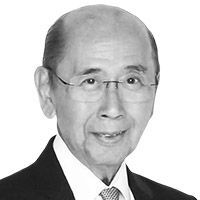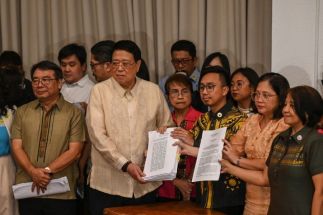Filipino ambassador recognized

Last June 4, in a column entitled “Philippine Diplomacy at its Best”, I wrote: “One of the finest achievements of Filipino diplomats went largely unnoticed and unheralded…..” I refer to the successful chairing by the Philippines, in the person of Ambassador Libran Cabactulan…..of the 2010 Review Conference of the Non-Proliferation Treaty (NPT) last month in New York.” Through deft diplomacy and leadership, Ambassador Cabactulan steered the conference to a successful conclusion in the form of an outcome document agreed on by the participating nations. His achievement was hailed by many UN members. No similar agreement was produced by the previous 2005 conference.
I am now delighted to report that last Wednesday, June 23, President Arroyo conferred on the good ambassador the Order of Sikatuna with the rank of Datu, the highest decoration of the nation given to diplomats, both foreign and national. This is recognition that’s truly deserved. Congratulations Libran.
It is significant to highlight the fact that Ambassador Cabactulan is a career diplomat. In the brief time he has been the Permanent Representative to the UN (two months), he has more than earned his stripes. I look forward to his adding further luster to his accomplishments in coming years. It is my hope and plea that his tenure at the UN will not be shortened by the appointment of a political replacement.
e-delivery of government services
Our last three Presidents, particularly President Arroyo, have combined to advance the cause of Information and Communications Technology (ICT) as a tool for generating economic growth. Even so, much more needs to be done in this area of providing government services through ICT to achieve greater efficiency and accuracy. My friend and former IBM colleague Virgilio Pena, in a recent column for Business World, wrote the following:
“The outgoing administration’s primary focus in its ICT agenda was job creation. This effort spawned an industry which has not only created over half a million ICT related careers nationwide for our youth, it has also succeeded in generating investments into the country and making the Philippines only second to India in the outsourcing industry.
“Sadly, however, the outgoing administration did not provide the same level of leadership in e-Governance – the pervasive implementation of ICT in delivering government services to the public.
“It is therefore incumbent upon the incoming administration to focus on it to build its own legacy in ICT development. e-Governance has been defined as more than just automating existing manual processes. It is developing a new relationship between government and citizen. It requires breaking of old paradigms and changing the behavior of both public officials and citizens.”
e-friendly Department of Foreign Affairs
There is, however, one government agency that has persevered and as a consequence is getting closer to developing what Ver Pena described as a new relationship. And this is our Department of Foreign Affairs.
I still distinctly remember the long lines at the back of DFA in Calle Roberts. Neighbors regularly complained about the large number of people and quite often the fetid odor of urine. All of this was due to the thousands of passport applicants who were seeking employment overseas. In 1994, the DFA reached peak loads of 4,000 applicants per day. As the foreign secretary at the time, I was lambasted by columnists for not resolving this glaring and regrettable situation. I promised to resolve the problem by moving the passport processing division to another location and computerizing the passport process. In August of 1994, on DFA foundation day, I presented to President Ramos and the Cabinet a proposal to adopt the use of Machine Readable Passports (MRP). It was to be the first BOT project proposed for a government department. President Ramos approved it on the spot and tenders were issued subsequently.
The Philippines previously committed, like other countries, to implement MRP as required by the International Civil Aviation Organization (ICAO) by April 1, 2010. MRP is a passport that contains a machine readable zone with coded information about the passport holder’s name, date of birth and other information. MRPs follow format and standards set by the ICAO. The information in the zone can be read manually and with the use of a machine which automatically records the data, thus eliminating the need for the immigration officer to manually enter it and ensuring faster processing and accuracy.
Due to circumstances beyond our control, however, the DFA was not able to implement the MRP because of a freeze on computer acquisitions due to the “Top Web Scandal” at the time. My successors tried their utmost to implement it, but bureaucracy, prolonged negotiation and litigation prevented implementation.
In 2007, the Machine Readable Passport was finally implemented 13 years after I first proposed it. At this point, four million MRP passports have been issued.
I was delighted to learn that, in August 2009, DFA went one step further by launching the Philippine ePassport that will make the country at par with developed countries. More than 60 countries in the world now issue ePassports including the United States, Japan, Singapore, Hong Kong SAR, the European Union and many others. To date, approximately four hundred thousand ePassports have been issued.
ICAO sets the standard for the issuance of the ePassport but it is not mandatory at this time. It is only MRP that is required. The ePassport has an embedded Integrated Chip where the photograph, personal information and biometrics of the bearer are stored in accordance with ICAO specifications. These can be read by chip readers at the immigration counters worldwide. An ePassport also contains a machine readable zone for those countries without chip reading capability. The ePassport is highly secure, hence prevents passport forgery and tampering.
The peak load at DFA has increased by 50 percent since 1994 to about 6,000 daily applications nationwide. A citizen can now apply for the ePassport either in the brand new Consular Affairs office located in Aseana Business Park along Diosdado Macapagal Avenue or in the 19 regional offices. This month DFA will open a satellite office in the POEA office so that OFWs will have even easier access to a passport. Senior citizens do not have to ask for an appointment; they can go directly to DFA where there is a separate line for them. There are now 19 foreign posts that can issue ePassports.
Secretary Alberto G. Romulo gave this project the political will and management backing despite multiple obstacles placed in front of him. Ambassador Domingo “Doy” Lucenario, Jr., now our envoy to Kenya, was the project manager who implemented both the MRP and ePassport project. Having been in the Information Technology field in previous years, I can attest to the fact that Doy’s performance was outstanding. He not only had the technical and systems knowhow, but he had the leadership capability to motivate a work force unaccustomed to the disciplines of technology and many of whom feared automation would lead to the loss of jobs.
The DFA has set the example in delivering an e-friendly service to the Filipino people. And this is all thanks to the desire and the will to innovate within the department. May the same thing happen in other departments and agencies of government.
- Latest
- Trending



























